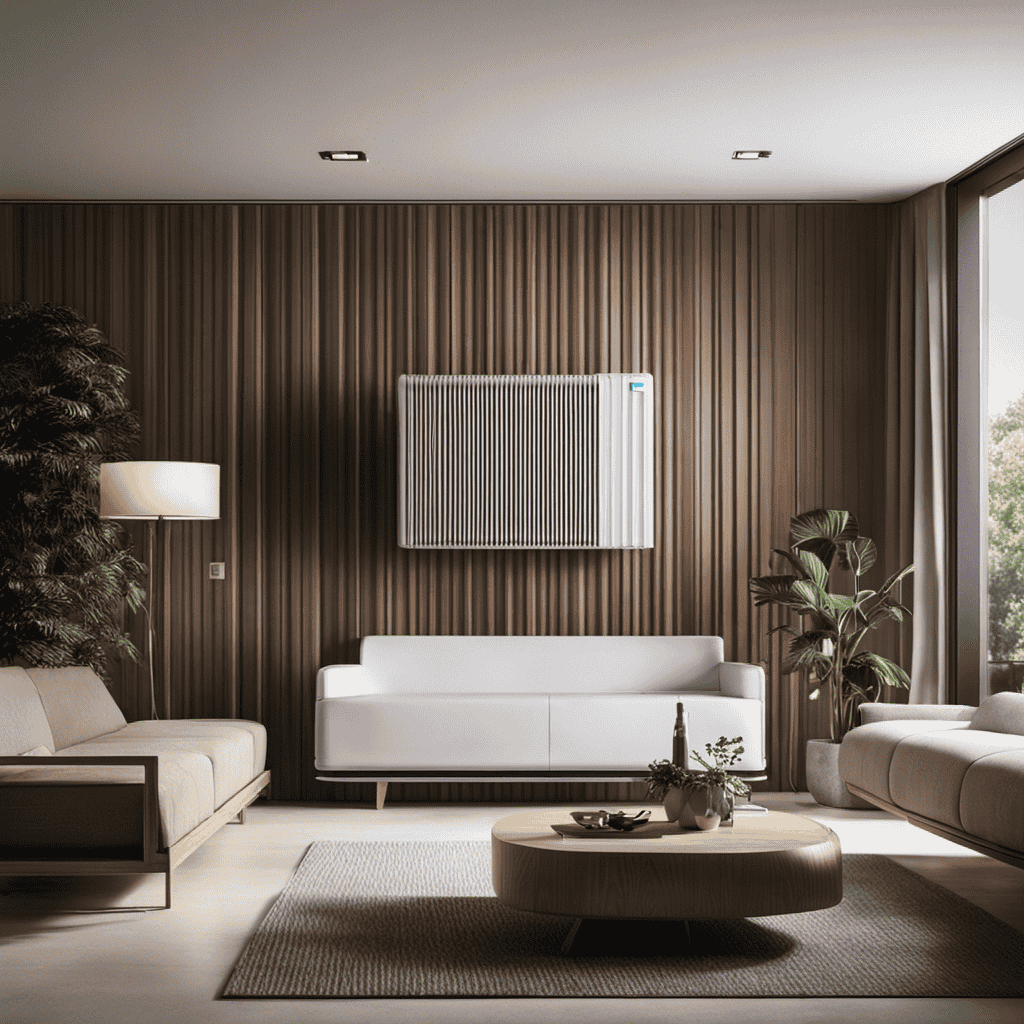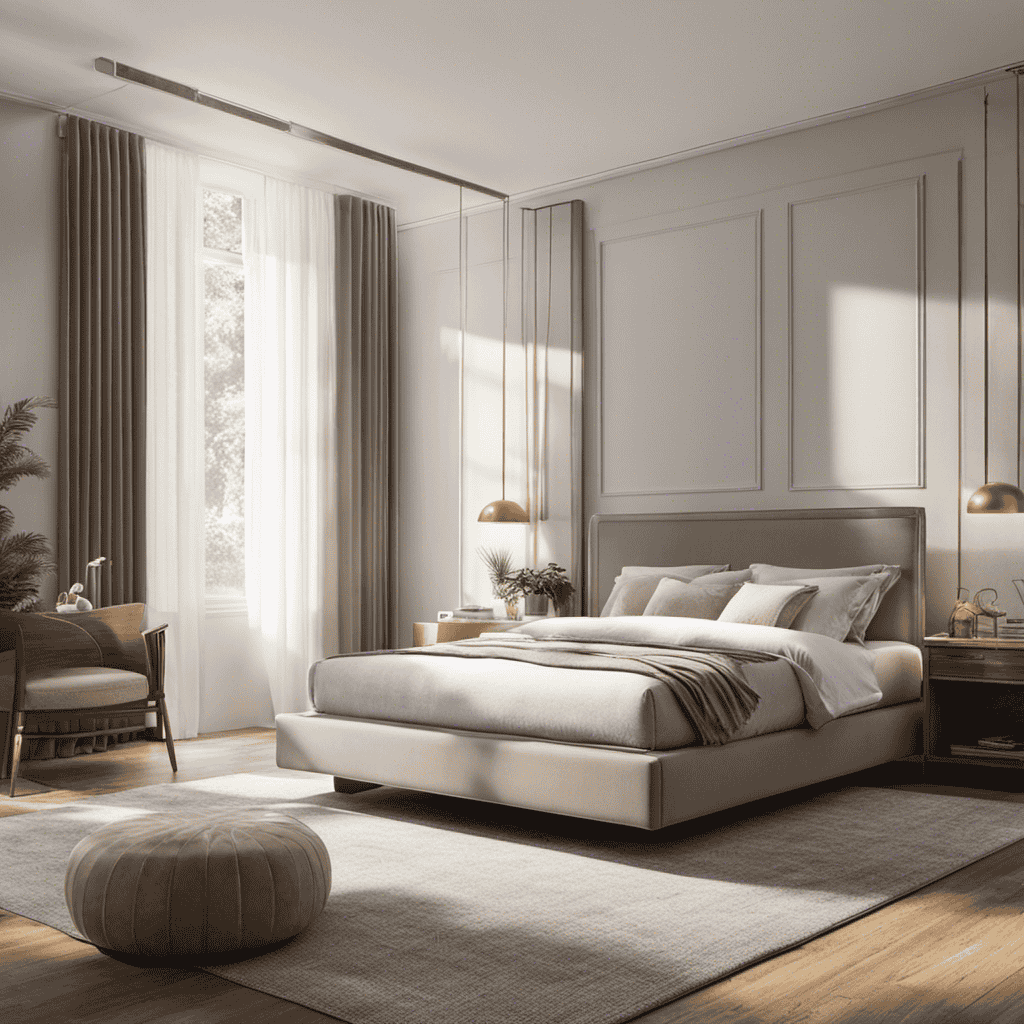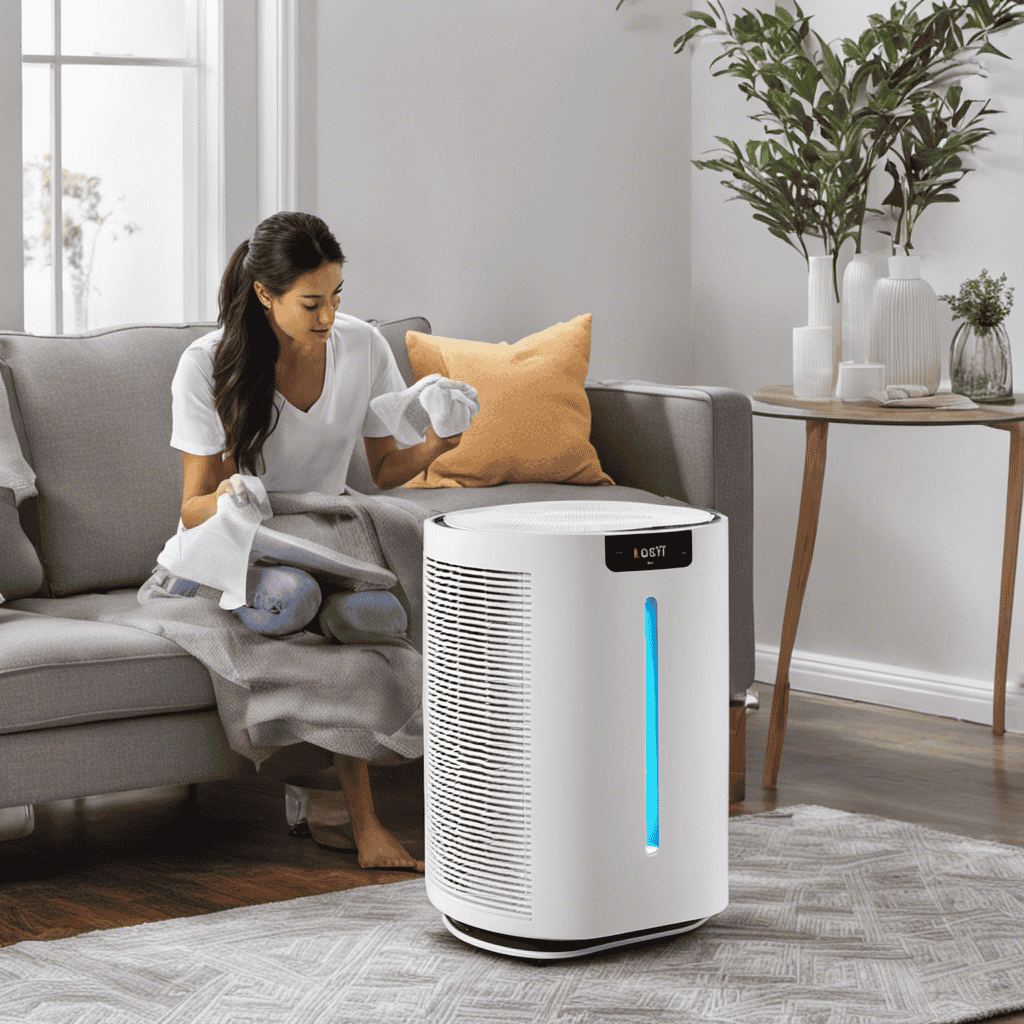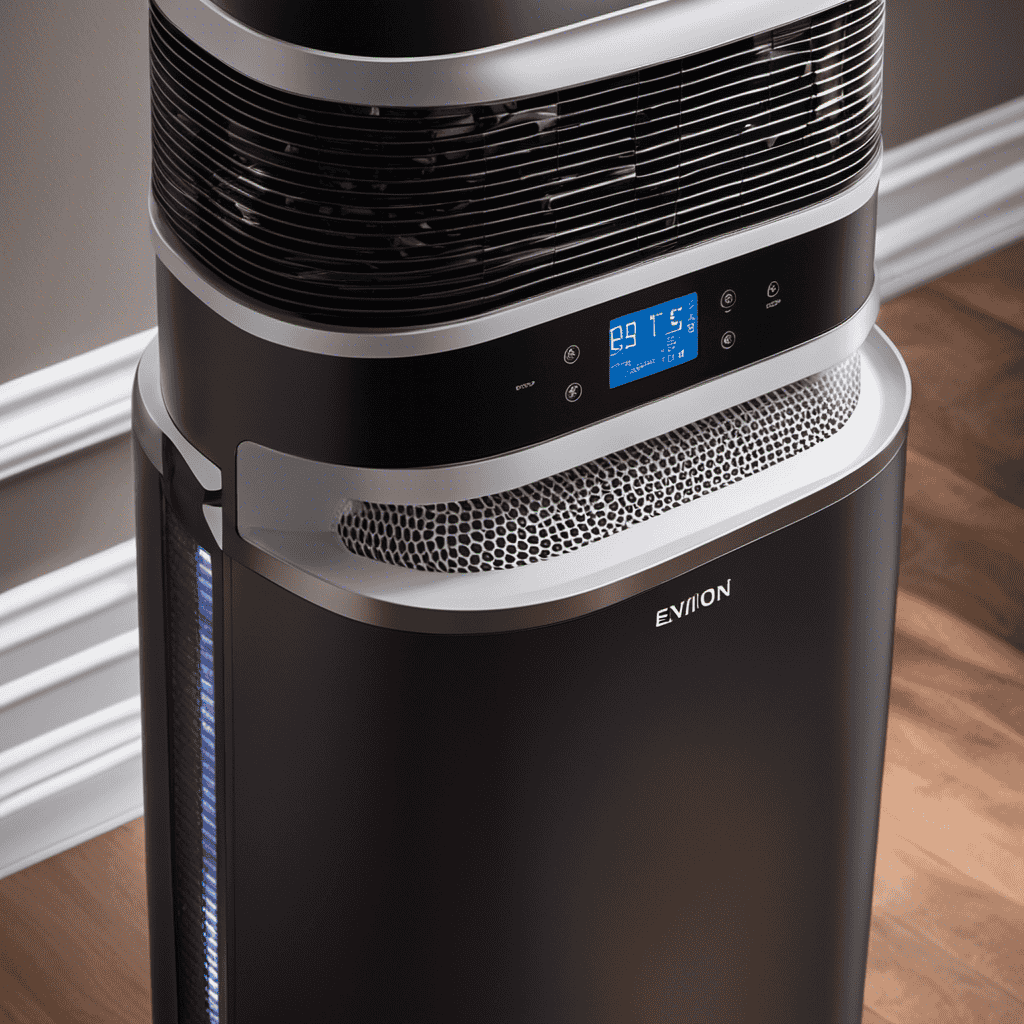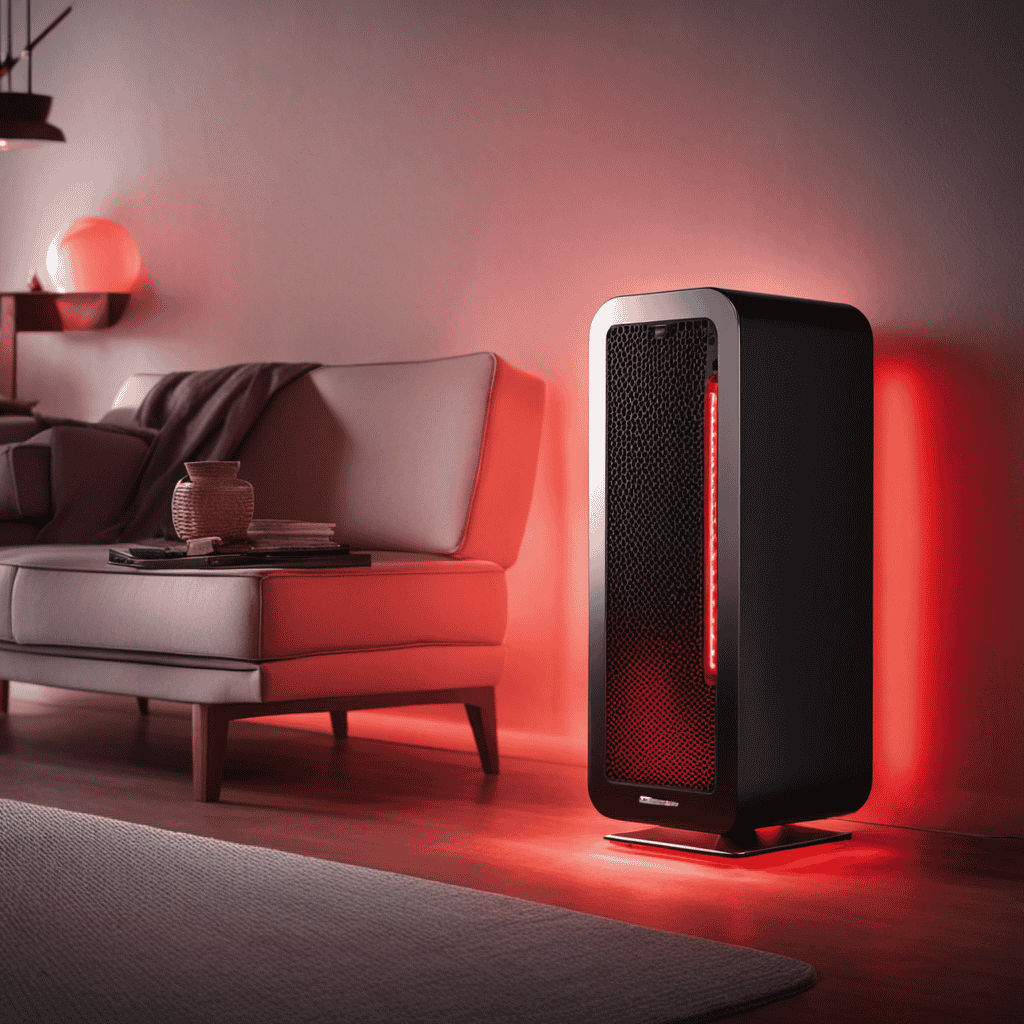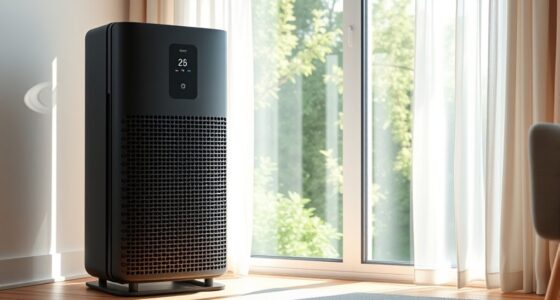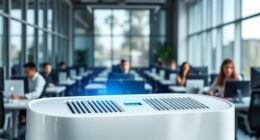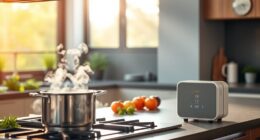I am always striving to enhance indoor air quality, so I was interested in understanding the distinction between an air conditioner and an air purifier.
It’s easy to get confused with all the options out there, but understanding their unique functions is crucial.
Just like comparing apples to oranges, these two devices serve different purposes.
While an air conditioner cools and controls temperature, an air purifier focuses on removing pollutants and allergens from the air we breathe.
Let’s dive deeper into the specifics to make an informed decision.
Key Takeaways
- Air purifiers are more energy-efficient than air conditioners, resulting in lower energy bills.
- Air conditioners focus on cooling the air and removing moisture, while air purifiers focus on improving indoor air quality by removing pollutants and allergens.
- Air purifiers use filters and additional technologies to clean the air, while air conditioners use a refrigeration cycle to extract heat from the indoor air.
- Regular maintenance and cleaning of filters are necessary for both air purifiers and air conditioners to ensure efficiency and longevity.
Energy Efficiency
Air purifiers are typically more energy-efficient than air conditioners. When considering cost effectiveness and energy consumption, air purifiers come out on top.
Unlike air conditioners, which require a significant amount of electricity to cool and maintain a specific temperature, air purifiers only need enough power to circulate and filter the air. This means that air purifiers consume less energy overall, resulting in lower energy bills.
Additionally, air purifiers are designed to run continuously, allowing them to constantly clean the air without the need for frequent on and off cycles. This not only saves energy but also ensures that the air is consistently purified.
In terms of cost effectiveness and energy consumption, air purifiers are the clear winner.
Cooling and Temperature Control
To keep your space cool and control the temperature, you can use an air conditioner or an air purifier. Both devices have different functions and capabilities.
An air conditioner is primarily designed to cool the air while also removing moisture from it. It uses a refrigeration cycle to extract heat from the indoor air and expels it outside. This process requires a significant amount of energy consumption.
On the other hand, an air purifier is designed to improve indoor air quality by removing pollutants, allergens, and odors from the air. It uses filters and sometimes additional technologies like UV light or ionization to clean the air. While an air purifier does not directly cool the air, it can indirectly contribute to a more comfortable environment by eliminating contaminants that may affect air quality.
Therefore, when deciding between an air conditioner and an air purifier, it is important to consider both cooling needs and air quality concerns.
Air Filtration Systems
When it comes to air filtration systems, there are various types of filters available. These filters play a crucial role in purifying the air by removing dust, allergens, and pollutants.
Clean air is essential for maintaining good health and reducing the risk of respiratory issues. Regular maintenance and cleaning of the filters are necessary to ensure their efficiency and prolong their lifespan.
Types of Filters
If you’re looking to choose between an air conditioner and an air purifier, you’ll want to consider the different types of filters available. Filters play a crucial role in both devices, as they are responsible for trapping and removing contaminants from the air.
Here are four types of filters commonly used in air purifiers and air conditioners:
-
HEPA filters: These high-efficiency particulate air filters are designed to capture particles as small as 0.3 microns, including dust, pollen, and pet dander.
-
Carbon filters: These filters use activated carbon to absorb and eliminate odors, gases, and VOCs (volatile organic compounds).
-
Electrostatic filters: These filters create an electrostatic charge to attract and trap airborne particles, such as pet hair and mold spores.
-
UV filters: These filters use ultraviolet light to kill bacteria, viruses, and mold spores.
Considering the types of filters available can help you make an informed decision about which device is best suited for your needs. One important aspect to consider is the benefits of clean air, which we will explore in the next section.
Benefits of Clean Air
Breathing in clean air has numerous benefits for you, such as improving your overall health and reducing the risk of respiratory issues. Maintaining good air quality is crucial, especially indoors where we spend most of our time. Indoor pollutants can have a significant impact on our well-being, causing allergies, asthma, and other respiratory problems. To emphasize the importance of clean air, I have provided a table below highlighting some key benefits:
| Benefits of Clean Air |
|---|
| Improved respiratory function |
| Reduced allergies and asthma |
| Enhanced immune system |
| Increased energy levels |
| Better sleep quality |
Maintenance and Cleaning
Regular maintenance and cleaning of your indoor spaces is essential to ensure optimal air quality and reduce the presence of pollutants. Here are some maintenance tips and cleaning techniques to help you achieve cleaner air:
-
Change air filters regularly: Dirty filters can restrict airflow and allow pollutants to circulate in your home. Replace them every 3 months.
-
Clean air vents: Dust and debris can accumulate in air vents over time. Use a vacuum cleaner or a damp cloth to remove any buildup.
-
Dust and vacuum regularly: Dusting surfaces and vacuuming carpets and upholstery can help remove allergens and contaminants from your home.
-
Keep humidity levels in check: High humidity can promote mold growth, which can worsen indoor air quality. Use a dehumidifier if necessary.
By following these maintenance tips and cleaning techniques, you can ensure that your indoor spaces are clean and the air quality is improved.
Now, let’s dive into the function and purpose of air conditioners and air purifiers.
Function and Purpose
When it comes to air conditioning systems, it is important to understand the difference between cooling and cleansing.
Cooling focuses on lowering the temperature of the air, while cleansing refers to filtering out air pollutants.
Air conditioners primarily focus on cooling the air, whereas air purifiers are designed to filter out pollutants such as dust, pet dander, and allergens.
Additionally, air conditioners have temperature control capabilities, allowing users to adjust the temperature to their desired comfort level.
Cooling Vs. Cleansing
If you’re comparing an air conditioner and an air purifier, one thing to consider is the difference in their cooling and cleansing capabilities. Here are four key points to understand the distinction between these two devices:
-
Cooling: Air conditioners are designed primarily to cool the air by removing heat and humidity from the indoor environment. They use a refrigeration cycle to lower the temperature and create a comfortable atmosphere.
-
Cleansing: On the other hand, air purifiers focus on improving air quality by removing pollutants, allergens, and contaminants from the air. They employ various technologies such as HEPA filters, activated carbon filters, and UV sterilization to effectively purify the air.
-
Energy Consumption: Air conditioners consume more energy compared to air purifiers, as they require a significant amount of power to cool the air. This can result in higher electricity bills and increased environmental impact.
-
Air Quality: While air conditioners can help with humidity control, they do not effectively eliminate harmful particles or odors from the air. Air purifiers, however, are specifically designed to tackle air quality issues, providing cleaner and fresher air for improved respiratory health.
Filtering Air Pollutants
One important factor to consider is the types of pollutants that can be filtered out by each device. Both air conditioners and air purifiers play a role in improving air quality, but they target different pollutants. Air conditioners primarily focus on cooling the air and removing excess moisture, while air purifiers are designed to filter out various contaminants present in the air. Here is a comparison of the pollutants filtered by each device:
| Air Conditioner | Air Purifier |
|---|---|
| Dust | Allergens |
| Pollen | Smoke |
| Pet dander | Volatile Organic Compounds (VOCs) |
| Mold spores | Bacteria and viruses |
It’s important to note that while air conditioners may help in reducing some pollutants, air purifiers are specifically designed to tackle a wider range of airborne contaminants. Additionally, air purifiers are more energy-efficient compared to air conditioners, making them a better choice for long-term air quality improvement.
Temperature Control Capabilities
To control the temperature in your space, you can adjust the settings on your device. Here are four important things to know about temperature control capabilities:
-
Energy Consumption: Air conditioners typically consume more energy than air purifiers, as they need to cool the air. This can result in higher electricity bills.
-
Cooling Efficiency: Air conditioners are designed to cool the air and maintain a specific temperature, while air purifiers do not have the same cooling capabilities. They focus primarily on improving air quality.
-
Air Quality: Both air conditioners and air purifiers can contribute to better air quality, but in different ways. Air conditioners filter out some airborne particles, while air purifiers are specifically designed to remove pollutants, allergens, and odors from the air.
-
Climate Control: Air conditioners allow for precise temperature control, ensuring a comfortable indoor environment. Air purifiers, on the other hand, do not have the same temperature control capabilities.
Controlling the temperature in your space is essential for maintaining comfort and optimizing energy consumption.
Now, let’s explore the health benefits of using air purifiers.
Health Benefits
There’s no denying that an air purifier can greatly improve the air quality in your home. As someone who values indoor air quality and respiratory health, investing in an air purifier is a wise choice.
These devices work by filtering out pollutants and contaminants from the air, ensuring that you and your family breathe in clean, fresh air. The filters in air purifiers can capture a wide range of particles, including dust, pollen, pet dander, and even harmful gases.
This is particularly beneficial for individuals with allergies or respiratory conditions, as it helps to reduce symptoms and improve overall well-being. By removing these airborne irritants, air purifiers can create a healthier and more comfortable living environment.
Maintenance and Cleaning
Regular maintenance and cleaning of your air purifier is crucial to ensure its optimal performance and longevity. Here are some maintenance tips and cleaning techniques to keep your air purifier in top shape:
-
Regularly replace the filters: Check the manufacturer’s instructions and replace the filters as recommended. This will ensure that your air purifier continues to effectively remove pollutants from the air.
-
Clean the exterior: Dust and debris can accumulate on the exterior of your air purifier, affecting its performance. Use a soft cloth or brush to gently clean the surface and remove any build-up.
-
Vacuum the pre-filter: If your air purifier has a pre-filter, it can become clogged with larger particles. Vacuum the pre-filter regularly to remove any debris and maintain its efficiency.
-
Check the fan and vents: Over time, the fan and vents can collect dust and obstruct airflow. Use a brush or compressed air to clean them, ensuring that the air can flow freely through the unit.
Cost and Affordability
Maintaining and cleaning my air purifier is essential to keep it running efficiently and lasting longer.
When it comes to cost analysis and affordability comparison, air purifiers tend to be more affordable compared to air conditioners. Air conditioners not only require the initial cost of purchase, but also have higher energy consumption, leading to increased electricity bills.
On the other hand, air purifiers are generally more energy-efficient and require minimal maintenance, resulting in lower long-term costs. Additionally, air purifiers are designed to target and remove specific pollutants from the air, making them a cost-effective solution for individuals with specific respiratory concerns or allergies.
Overall, when considering the cost and affordability, air purifiers provide a more economical option compared to air conditioners.
Noise Level
The noise level of most air purifiers is relatively low, making them suitable for use in bedrooms or offices. Here are four reasons why air purifiers provide silent operation:
-
Advanced Technology: Air purifiers are equipped with innovative technology that reduces noise levels. They use noise reduction features such as sound-dampening materials and silent fans to ensure quiet operation.
-
Sleep Mode: Many air purifiers come with a sleep mode feature. This mode reduces fan speed and noise level while still maintaining effective air purification. It allows you to enjoy a peaceful and quiet sleep without any disturbance.
-
Whisper-Quiet Operation: Air purifiers are designed to operate quietly, producing minimal noise levels. This makes them ideal for use in bedrooms, where a peaceful and quiet environment is essential for a good night’s sleep.
-
Noise Control: Air purifiers are built with noise control in mind. They are engineered to minimize vibrations, motor noise, and other disturbances, resulting in a silent and comfortable operation.
Overall, air purifiers provide silent operation, making them a perfect choice for creating a calm and peaceful atmosphere in your bedroom or office. With features like sleep mode and advanced noise reduction technology, you can enjoy the benefits of clean air without any unwanted noise.
Environmental Impact
Using an air purifier can significantly reduce our environmental impact by improving indoor air quality and reducing the need for harsh chemicals or fragrances. Air purifiers work by removing pollutants, such as dust, pollen, pet dander, and mold spores, from the air.
This not only improves the air we breathe, but also reduces the carbon footprint associated with traditional cleaning methods. Unlike air conditioners, which simply cool or heat the air, air purifiers actively filter out harmful particles.
By removing these pollutants, air purifiers create a healthier living environment and reduce the reliance on chemical-based cleaning products that can have negative effects on both our health and the environment.
Furthermore, by improving indoor air quality, air purifiers can help reduce respiratory issues and allergies, leading to a better quality of life.
Conclusion
In conclusion, it’s clear that air conditioners and air purifiers serve different purposes and have distinct features.
Air conditioners focus on cooling and temperature control, while air purifiers prioritize air filtration and purification.
They are like two sides of a coin, each providing unique benefits.
However, it’s important to consider factors such as energy efficiency, maintenance, noise level, and cost before making a decision.
Just like a well-orchestrated symphony, these appliances harmoniously work together to create a comfortable and healthy indoor environment.
